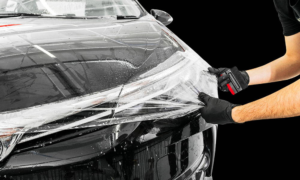Honda B1 Service: Everything You Need to Know

If you own a Honda, you know the importance of keeping your vehicle in top-notch condition. Regular maintenance is key to ensuring the longevity and performance of your car, and one of the essential services in Honda’s maintenance schedule is the Honda B1 service. But what exactly is this service, and why is it crucial for your vehicle?
In this article, we’ll dive deep into the Honda B1 service, covering what it involves, why it’s necessary, and the steps taken during the service. We’ll also answer some frequently asked questions (FAQs) and give you valuable tips on how to take care of your Honda in between services.
What is Honda B1 Service?
Honda’s B1 service is part of their maintenance minder system, which is built into the vehicle’s onboard computer. This system is designed to keep track of your vehicle’s condition and notify you when specific maintenance is due. The B1 service is typically triggered after a certain number of miles or a specific time interval, depending on driving conditions.
The Honda B1 service involves two primary components:
- Oil Change: This is the cornerstone of the B1 service. Regular oil changes are critical to ensuring that the engine continues to operate smoothly. Old oil can cause friction, wear, and overheating, which can damage engine parts. Honda recommends changing the oil and the oil filter to ensure proper engine lubrication.
- Tire Rotation: Tire rotation is important for even tire wear and extending the life of your tires. By rotating your tires, you ensure that all four tires wear evenly, which improves handling, fuel efficiency, and safety.
In addition to these main tasks, the B1 service may also include inspections of various vehicle components, such as the brakes, suspension, and fluids. The purpose of this service is to keep your vehicle running efficiently and prevent small issues from becoming big problems.
Why is Honda B1 Service Important?
The Honda B1 service is essential for several reasons:
- Engine Health: Regular oil changes ensure that the engine remains well-lubricated. Over time, engine oil can break down, becoming less effective at reducing friction between moving parts. This can lead to premature engine wear, poor performance, and higher repair costs in the future. By scheduling the B1 service, you can avoid these issues and keep your engine in optimal condition.
- Tire Longevity: Tires are one of the most expensive components of a vehicle to replace. By performing tire rotations during the B1 service, you help ensure that all tires wear evenly, which increases their lifespan. Uneven tire wear can lead to problems such as poor traction, decreased fuel efficiency, and a rough ride.
- Fuel Efficiency: Keeping your engine well-maintained ensures it runs more efficiently. Regular oil changes and tire rotations help optimize the vehicle’s performance, which can lead to better fuel efficiency. This can save you money at the pump in the long run.
- Preventative Maintenance: By following the Honda B1 service schedule, you are practicing preventative maintenance, which is far more cost-effective than waiting for problems to develop. This proactive approach helps catch minor issues before they escalate into expensive repairs.
- Manufacturer Recommendations: Following the manufacturer’s maintenance schedule ensures that your Honda is covered under warranty. It also helps maintain the vehicle’s resale value, as a well-maintained car is more attractive to buyers.
What Happens During Honda B1 Service?
When you bring your Honda in for a B1 service, the technician will perform several tasks to ensure your vehicle is in peak condition. Here’s what you can expect during the service:
1. Oil Change
The technician will replace your vehicle’s engine oil with fresh, high-quality oil. They will also change the oil filter to prevent contaminants from circulating in the engine. Oil changes typically take around 30 minutes to an hour, depending on the model.
2. Tire Rotation
Your technician will rotate the tires, ensuring they are positioned in a way that promotes even wear. This is important because the front and rear tires of your car wear differently. By rotating the tires, you help maximize their lifespan and improve overall performance.
3. Fluid Check and Top-Up
During the B1 service, the technician will check the levels of other important fluids, such as brake fluid, transmission fluid, coolant, and power steering fluid. If necessary, they will top them up to the recommended levels to ensure your vehicle is running smoothly.
4. Inspection of Key Components
Although the B1 service is primarily about oil and tire maintenance, the technician will also perform a basic inspection of various components, such as:
- Brakes: The technician will check the brake pads, rotors, and brake fluid.
- Suspension: They’ll inspect the suspension components to ensure they are in good condition.
- Belts and Hoses: The condition of the engine belts and hoses will be checked for any signs of wear or cracking.
How Often Should You Have Honda B1 Service?
The Honda B1 service is typically required every 7,500 miles or 12 months, whichever comes first. However, this can vary based on your driving habits and the specific model of your Honda. The maintenance minder system in your vehicle will notify you when the B1 service is due, so you don’t have to worry about keeping track manually.
If you drive in more extreme conditions (such as stop-and-go traffic, extreme temperatures, or heavy loads), you may need to perform the B1 service more frequently.
Cost of Honda B1 Service
The cost of a Honda B1 service can vary depending on the location, labor rates, and the specific model of your Honda. On average, you can expect to pay between $100 and $200 for the B1 service, including oil change and tire rotation. The cost may increase if additional services are required, such as topping off fluids or replacing worn-out parts.
To get the best value, it’s a good idea to ask about any available service packages or discounts offered by your dealership or service center.
DIY vs. Professional Honda B1 Service
While it’s possible to perform the B1 service yourself (especially the oil change and tire rotation), it’s generally recommended to have a professional handle it. A qualified technician will ensure the oil is properly drained and replaced, the correct oil filter is used, and the tire rotation is performed according to manufacturer specifications.
Additionally, a professional service will give your car a more thorough inspection, which can help catch small issues before they become larger problems.
FAQs about Honda B1 Service
1. How do I know when my Honda is due for a B1 service?
Your Honda’s maintenance minder system will alert you when the B1 service is due. This will appear on your dashboard display, indicating when it’s time to schedule an appointment.
2. Is Honda B1 service the same for all Honda models?
The B1 service is a general service for most Honda vehicles, but the specific tasks may vary slightly depending on the model and year. Always check your owner’s manual or consult with a professional to ensure that you’re following the correct maintenance schedule.
3. What happens if I ignore the Honda B1 service?
Ignoring the B1 service can lead to engine damage due to dirty oil, uneven tire wear, and decreased vehicle performance. Over time, neglecting routine maintenance can result in more expensive repairs down the road.
4. Can I perform Honda B1 service at home?
While you can change the oil and rotate the tires at home, it’s recommended to have a professional handle the full B1 service to ensure everything is done correctly and safely.
5. How long does the Honda B1 service take?
The B1 service typically takes about 1 to 1.5 hours, depending on your vehicle and the service center’s schedule. It may take longer if additional repairs or services are needed.
Conclusion
The Honda B1 service is an essential maintenance procedure that helps ensure your vehicle runs smoothly and efficiently. By changing the oil and rotating the tires, you can extend the lifespan of your car, improve its performance, and avoid costly repairs. Make sure to keep track of your maintenance schedule and take your Honda in for the B1 service as recommended.








